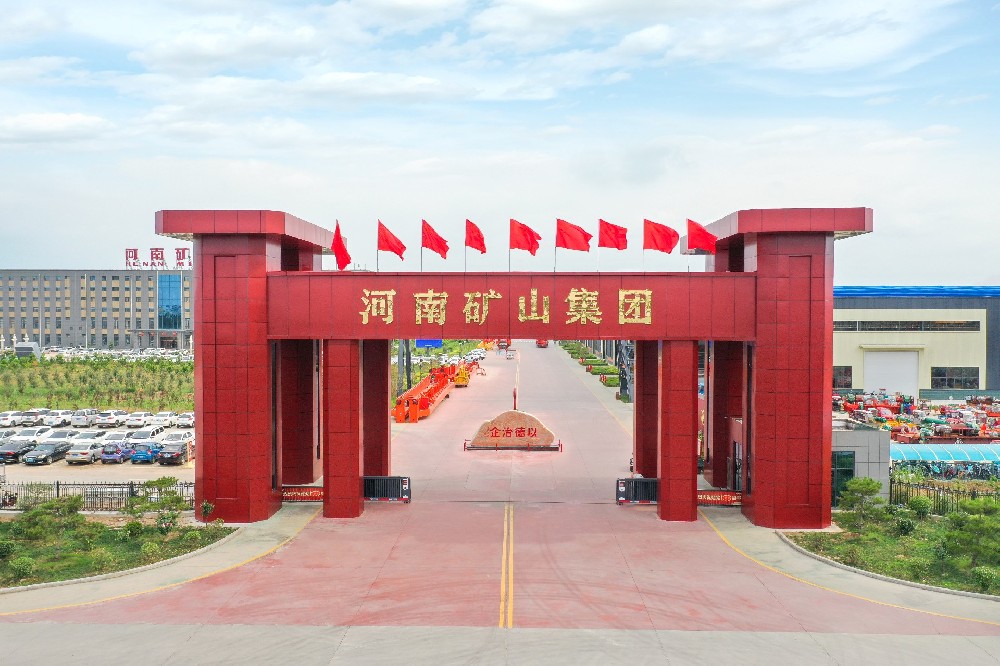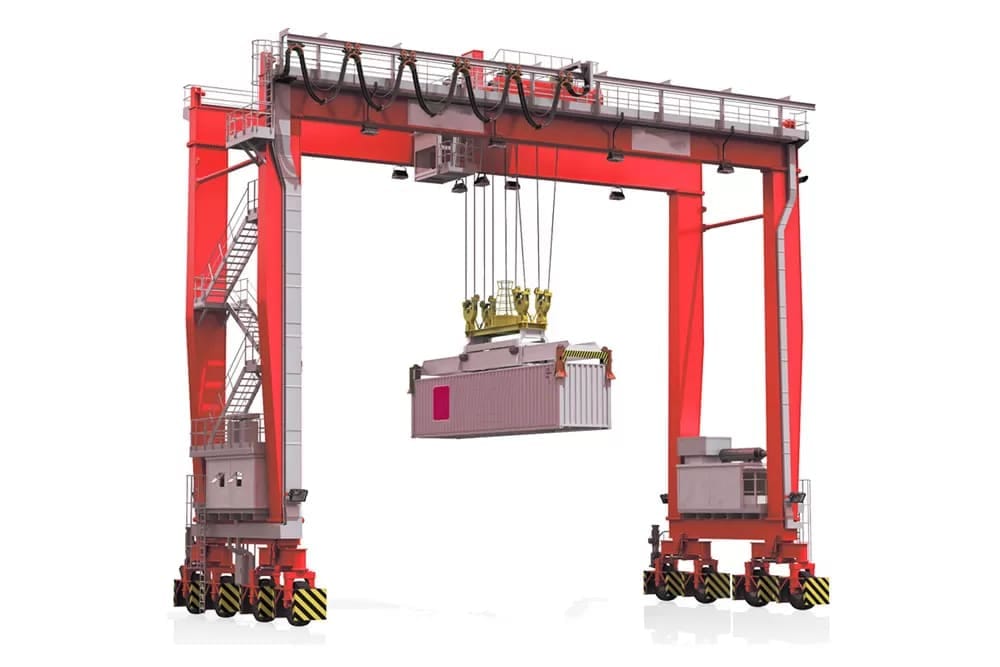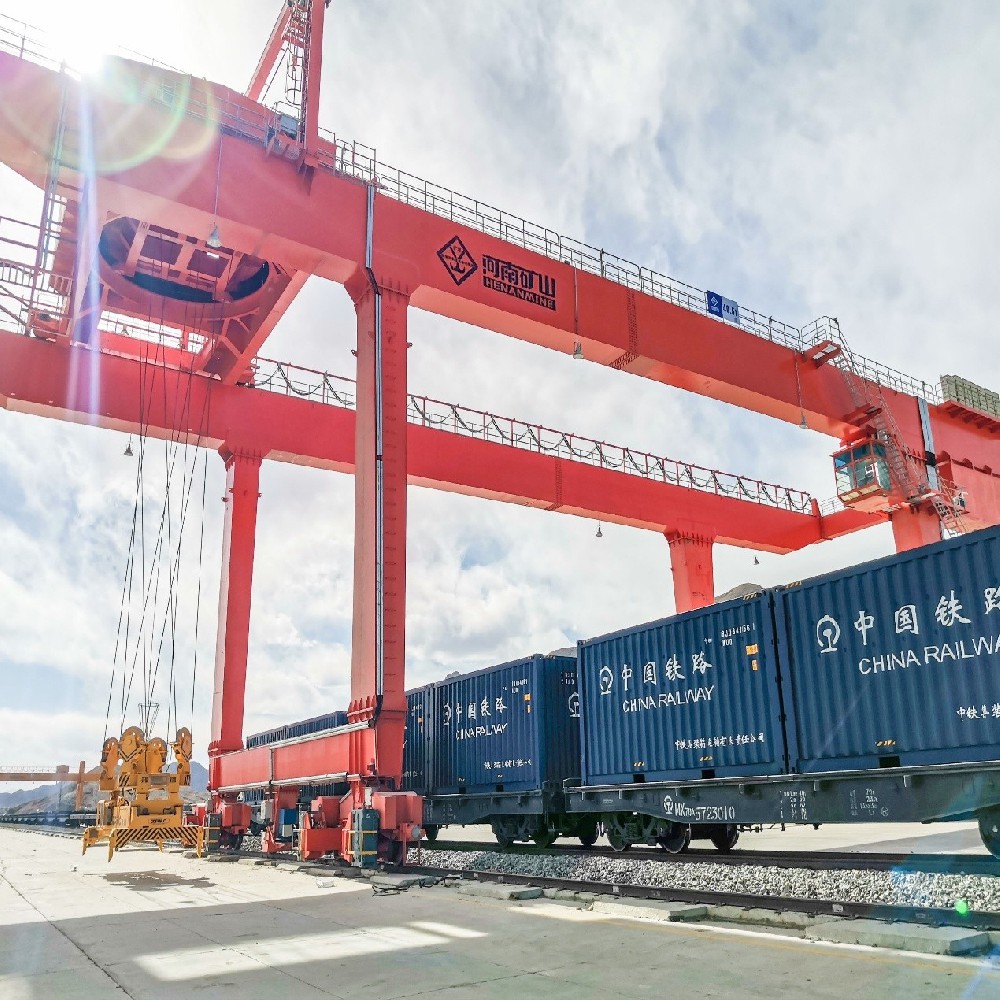- What is a gantry crane and what are the types?
-
Release Time:2025-07-28 10:21:09Share:
Gantry Crane, also known as portal crane, commonly called gantry, is a bridge - type crane where the bridge is supported on ground tracks through outriggers on both sides. Here is a detailed introduction to it:
Structural Composition
Metal Structure: It is the mechanical framework of the crane, consisting of a bridge and a gantry. The bridge is mainly composed of main beams and end beams, while the gantry is made up of main beams, outriggers, upper and lower crossbeams, etc. It is used to install various mechanisms and bear and transmit the load and its own weight of the crane.
Hoisting Mechanism: It is a mechanism used to lift or lower goods, composed of a driving device, a wire rope winding system, a lifting device, and safety protection devices. It is the most important and basic mechanism in the crane, and its performance directly affects the working performance of the entire crane.
Running Mechanism: It is mainly composed of a running support device and a running driving device. The running support device includes balancing devices, wheels, and tracks, etc., which are used to bear the self - weight and external load of the crane and transfer all loads to the track foundation; the running driving device is mainly composed of a motor, a reducer, a brake, etc., and is used to drive the crane to run on the track.
Electrical Part: It includes various motors, controllers, distribution cabinets, cables, etc. It provides power and control signals for various mechanisms of the crane, realizes various actions and functions of the crane, and also has various protection functions, such as overload protection, short - circuit protection, limit protection, etc., to ensure the safe operation of the crane.
Working Principle: It relies on the combination of two horizontal (longitudinal and transverse) movements, plus a lifting mechanism that moves goods up and down, to carry out lifting operations in a rectangular area and the space above it. Rail - mounted gantry cranes walk along the tracks laid on the site, and their working range is limited to the track - laid area; rubber - tyred gantry cranes are not restricted by tracks, have a larger movement range, can move forward, backward, and turn left and right by 90°, and can work from one yard to another.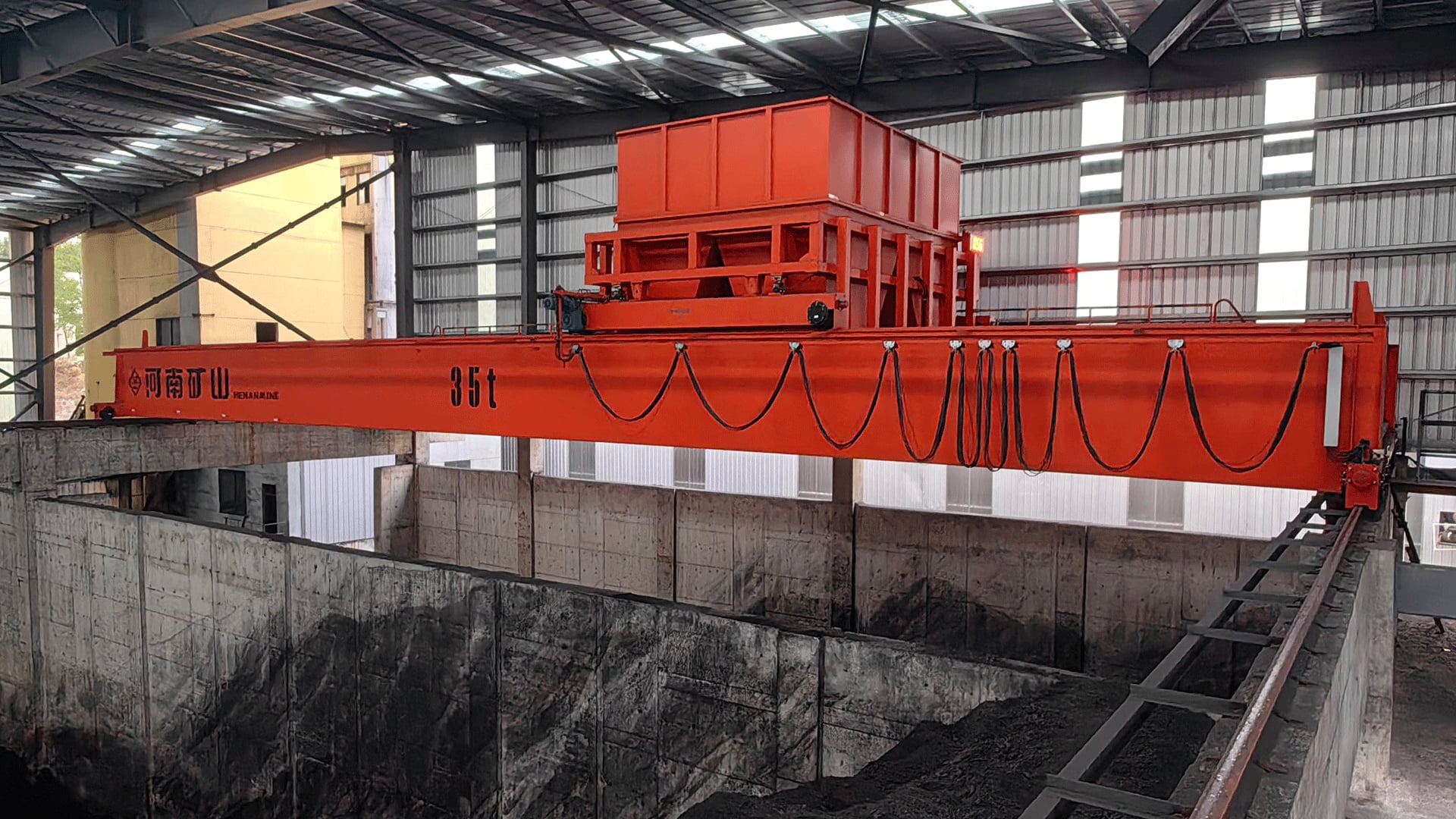 Type Classification
General - purpose Gantry Crane: It has a wide range of uses and can carry various piece goods and bulk materials. The lifting capacity is below 100 tons, the span is 4 - 35 meters, and the ordinary gantry crane with a grab has a higher working level.
Explosion - proof Gantry Crane: It is mainly used in places with explosion risks, such as chemical, petroleum, natural gas and other industries. It has explosion - proof performance and can prevent sparks, high temperatures, etc. generated during the operation of the crane from causing explosion accidents.
Rail - mounted Container Gantry Crane: It is used in container terminals. After the trailer transports the containers unloaded from the ship by the quay container crane to the yard or the rear, it stacks them or directly loads them for transportation, which can speed up the turnover of the container crane or other cranes. Generally, it can stack containers 3 - 4 layers high and 6 rows wide. The span is determined according to the number of container rows that need to be crossed, with a maximum of about 60 meters.
Rubber - tyred Container Gantry Crane: Similar to the rail - mounted container gantry crane, but it has better mobility, is not restricted by tracks, has a larger movement range, can move forward, backward, and turn left and right by 90°, and can work from one yard to another.
Application Fields
Ports and Wharves: It is used for loading and unloading containers, bulk materials, etc., which can improve the efficiency of cargo loading and unloading and speed up the turnover of ships.
Railway Freight Yards: It is used for loading, unloading and handling railway goods. It can unload goods from trains and stack them in the freight yard, or load them from the freight yard to trains, facilitating the transportation and storage of goods.
Industrial and Mining Enterprises: In industrial and mining enterprises such as mines, steel plants, and cement plants, it is used to transport raw materials and finished products such as ore, steel, and cement, which can improve production efficiency and reduce labor intensity.
Water Conservancy and Electric Power Engineering: It is used in dam construction, hydropower station equipment installation, etc. in water conservancy and electric power projects. It can lift and open/close gates and also carry out installation work. It has a large lifting capacity and a relatively small span.
Shipbuilding Industry: It is used for assembling hulls on the berth. It is usually equipped with two lifting trolleys, which can turn over and hoist large hull sections. The lifting capacity is generally 100 - 1500 tons, and the span can reach 185 meters.
Type Classification
General - purpose Gantry Crane: It has a wide range of uses and can carry various piece goods and bulk materials. The lifting capacity is below 100 tons, the span is 4 - 35 meters, and the ordinary gantry crane with a grab has a higher working level.
Explosion - proof Gantry Crane: It is mainly used in places with explosion risks, such as chemical, petroleum, natural gas and other industries. It has explosion - proof performance and can prevent sparks, high temperatures, etc. generated during the operation of the crane from causing explosion accidents.
Rail - mounted Container Gantry Crane: It is used in container terminals. After the trailer transports the containers unloaded from the ship by the quay container crane to the yard or the rear, it stacks them or directly loads them for transportation, which can speed up the turnover of the container crane or other cranes. Generally, it can stack containers 3 - 4 layers high and 6 rows wide. The span is determined according to the number of container rows that need to be crossed, with a maximum of about 60 meters.
Rubber - tyred Container Gantry Crane: Similar to the rail - mounted container gantry crane, but it has better mobility, is not restricted by tracks, has a larger movement range, can move forward, backward, and turn left and right by 90°, and can work from one yard to another.
Application Fields
Ports and Wharves: It is used for loading and unloading containers, bulk materials, etc., which can improve the efficiency of cargo loading and unloading and speed up the turnover of ships.
Railway Freight Yards: It is used for loading, unloading and handling railway goods. It can unload goods from trains and stack them in the freight yard, or load them from the freight yard to trains, facilitating the transportation and storage of goods.
Industrial and Mining Enterprises: In industrial and mining enterprises such as mines, steel plants, and cement plants, it is used to transport raw materials and finished products such as ore, steel, and cement, which can improve production efficiency and reduce labor intensity.
Water Conservancy and Electric Power Engineering: It is used in dam construction, hydropower station equipment installation, etc. in water conservancy and electric power projects. It can lift and open/close gates and also carry out installation work. It has a large lifting capacity and a relatively small span.
Shipbuilding Industry: It is used for assembling hulls on the berth. It is usually equipped with two lifting trolleys, which can turn over and hoist large hull sections. The lifting capacity is generally 100 - 1500 tons, and the span can reach 185 meters.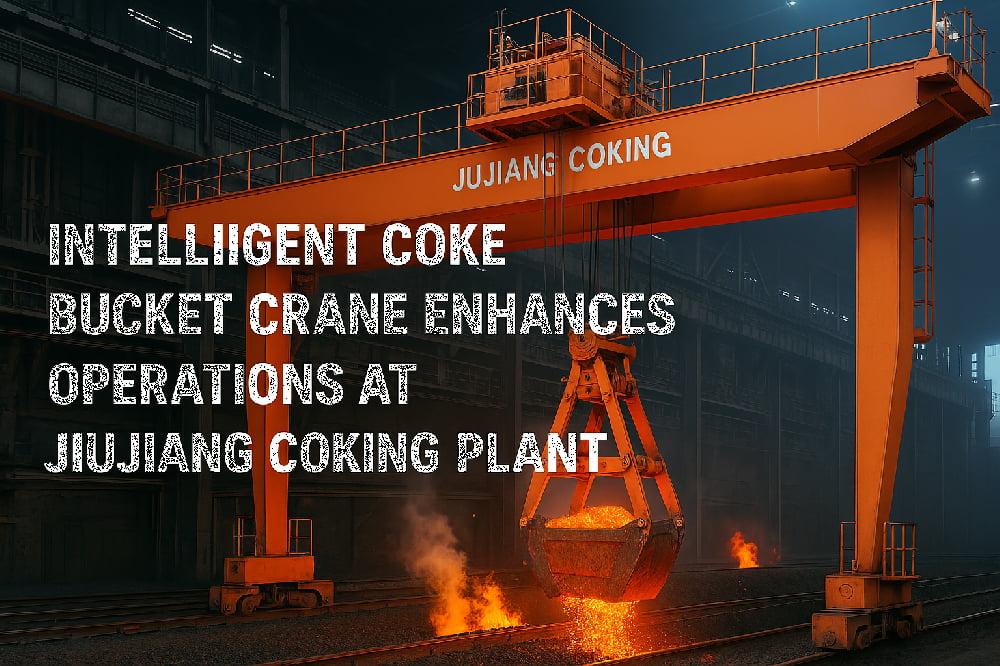 Advantages and Characteristics
High Site Utilization: It can walk directly on the ground track, and unlike equipment such as truck cranes, it does not need a large working space to set up outriggers. Therefore, it can work in a relatively small site, improving the utilization rate of the site.
Large Working Range: It has a large span and lifting height, and can carry out cargo lifting and loading/unloading operations in a large range, covering multiple cargo positions or working areas.
Wide Adaptability: It can adapt to different types of goods and working environments, such as bulk goods, general cargo, containers, etc. It can also be equipped with various lifting devices according to different working requirements, such as grabs, hooks, electromagnetic chucks, etc.
Strong Versatility: Different models and specifications of gantry cranes have certain versatility. They can meet different working requirements by replacing parts or making simple modifications, reducing the purchase and operation costs of equipment.
Advantages and Characteristics
High Site Utilization: It can walk directly on the ground track, and unlike equipment such as truck cranes, it does not need a large working space to set up outriggers. Therefore, it can work in a relatively small site, improving the utilization rate of the site.
Large Working Range: It has a large span and lifting height, and can carry out cargo lifting and loading/unloading operations in a large range, covering multiple cargo positions or working areas.
Wide Adaptability: It can adapt to different types of goods and working environments, such as bulk goods, general cargo, containers, etc. It can also be equipped with various lifting devices according to different working requirements, such as grabs, hooks, electromagnetic chucks, etc.
Strong Versatility: Different models and specifications of gantry cranes have certain versatility. They can meet different working requirements by replacing parts or making simple modifications, reducing the purchase and operation costs of equipment.
